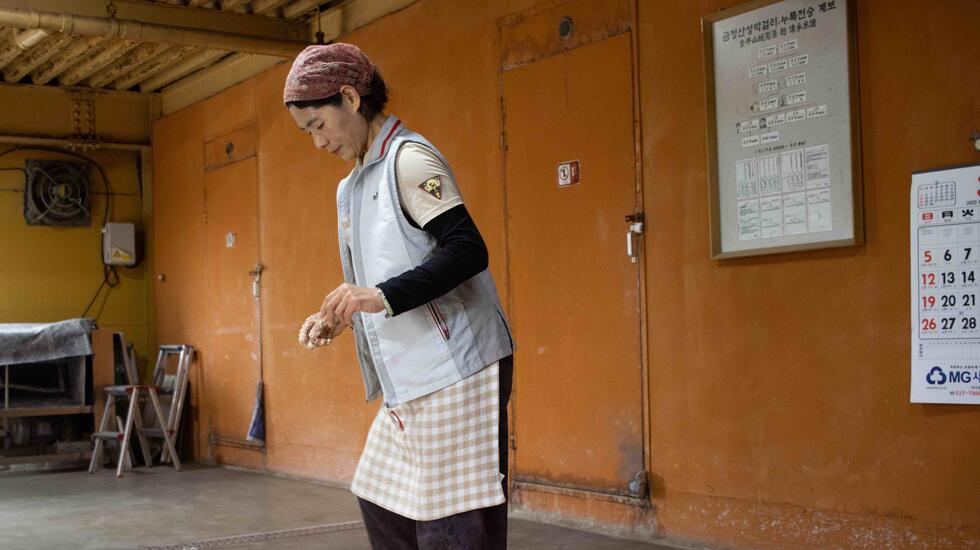In our photo journal series Keeping it Alive, we meet the people preserving fragments of cultural heritage across the world. This week, we duck into a makgeolli distillery near Busan to meet the makers using their feet to produce the South Korean rice wine
24 April, 2023

Originally
a farmer’s drink, makgeolli is a milky rice wine that
has been produced in South Korea for 500 years. Geumjeongsanseong
Village in Busan is home to the only brewery in the world that
holds onto the original method of preparing the yeast for
fermentation – by foot.
“Makgeolli is our spirit,” laughs Soo Jeang, who has been making
the rice wine in this way for six years. After washing her feet in
a plastic bowl in the corner of the room, she pours yeast into
another bowl with some warm water, and prepares to stand in it.
“Tradition is so important,” she explains. “If we don’t keep it,
the stories and methods of those who came before us will die.”
Deeply ingrained in South Korean culture, this method of alcohol
distilling has stood the test of time, even overcoming country-wide
bans. In 1934, the brewing of alcohol at home was forbidden for tax
reasons. By 1965, all grain-based alcohol was included in the ban
due to rice shortages. Restrictions were only lifted in the
90s.
Soo employs serious bouts of concentration as she stomps with
alternating feet on the yeast, much like pressing grapes. This
process takes 40 minutes, after which the mixture forms a thick
paste underfoot. The master of makgeolli, brewer Yoo Cheong-gil,
looks on.
After the paste is tipped out onto a flat surface, it’s wrapped
in a linen cloth and then flattened into a pizza shape, also by
foot. The disc is then placed in a room made of red clay, where it
is left to ferment for a week. To turn it into wine, rice that has
been washed 100 times is added to the fully fermented yeast. These
ingredients are crushed together by hand, then mixed with water and
left to ferment for another week, producing a smooth and silky wine
that can be sieved straight into a bottle and consumed. “I make a
really tasty one at home,” nods Soo.
